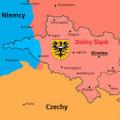Continental climate - a type of climate characterized by stably hot summers, stably frosty winters and low rainfall. The continental climate is formed as a result of the prevailing impact on the atmosphere of large land masses. This type of climate is typical for the interior regions of the continents. The continental climate is dominant in a significant part of the territory of Russia, Ukraine, Kazakhstan, Uzbekistan, Mongolia and the interior regions of the United States and Canada. The continent with the greatest continental climate is Eurasia. The continental climate leads to the formation of steppes and deserts, since most of the moisture of the seas and oceans does not reach the inland regions.
The climatic features are similar to those of the subarctic regions, with cold and snowy winters and short and crisp summers. It is called Alpine because it is typical of the Alpine region. It is characterized by its distance from the sea. For this reason, cold winters and hot summers with high thermal excursions.
Very hard winters and cool summers. This is the climate of the central eastern region, from Germany to Poland, the Po Valley and the interior of the Balkans. Mild temperatures and heavy rainfall throughout the year. Only simple herbaceous plants with shrubs, typical of temperate continental regions with a lack of precipitation. This is a biome that alternates with temperate forest... Wildlife: wolves, foxes, hares, small rodents and birds of prey.
Continental climate of temperate latitudes
In temperate latitudes, the continental climate is characterized by a large annual amplitude air temperatures (hot summers and cold winters), as well as significant temperature changes during the day (especially during transitional seasons). The continental climate differs from the maritime climate by a lower average annual temperature and humidity, in some cases by increased dustiness of the air. The continental climate is characterized by fairly low cloud cover and low annual quantity precipitation, the maximum of which occurs in the summer. Frequent strong winds, dust storms occur in severely arid regions.
He is interested southern part Europe, between the Black and Caspian Seas. Here winters are cold and hot summers. Precipitation is low, so some areas are almost desert. In arid continental areas, meadows turn into steppes, flat flat with dry and dry grasses for lack of rain. The ancient European steppe has been changed by man.
The municipality of Pazardzhik is located in southern Bulgaria, in the central part of the Upper Thracian Plain, north of the Rhodope Mountains along the Maritsa River. The area of the municipality and its relative share in the Pazardzhik region and on the territory of the country are presented in the following table.
Continental climate of the tropics
In the continental climate of the tropics, annual fluctuations in air temperature are not as great as in temperate latitudes, and there is little or very little precipitation. Continental climate in tropical latitudes usually results in deserts and semi-deserts. Summer in the deserts is extremely hot (up to 55 degrees Celsius), in winter there are sometimes frosts. The average temperature of the coldest month of the year is usually above +15 degrees; in summer, the average monthly temperature can reach +40 degrees and above.
The relief of the municipality is flat. Below the heights of 200 meters. The field is bad on the river banks because it sank. This contributed to the flat nature of the Pazardzhik field. On either side of the Maritza and its tributaries, a low but wide non-floating terrace was formed.
Here are the best alluvial soils in the field. The municipality of Pazardzhik has a favorable transitional continental climate, characterized by summer droughts. This climate represents a transition between the temperate continental climate of the Danube Plain and the transitional Mediterranean climate of Southeast Bulgaria.
Continental climate of polar latitudes
V polar latitudes, the continental climate is characterized by large annual fluctuations in air temperature and warm, but short summers, as well as very cold and long winters. So, for example, in the continental climate of Yakutia, Evenkia and the continental regions of the Magadan region, the temperature in January in some settlements can drop below -65 ° C (Batamay, Verkhoyansk, Delyankir, Iema, Kochumdek, Maly Tuostakh, Oymyakon, Pokrovsk, Severo-Yeniseisky, Tembenchi, Tomtor, Tura, Kharbalakh, Khonuu, Churapcha). At the same time, the average monthly temperature of the coldest month near the cold pole reaches -54 degrees.
Freezing temperatures in the Thracian lowland are typical for the most typical winter month - January. Due to the protection of Stara Planina and the influence Mediterranean Sea average temperature January in Pazardzhik is positive. Summer temperatures in Pazardzhik are not higher than those of the Danube Plain. Long summers, often from April to October, are quite warm.
This is convenient both for growing two crops of arable land with a grain harvest, and for better development of some annual crops that grow in the south - rice, tobacco, cotton and others. In the lowlands, the physical and geographical conditions are more pronounced in terms of temperature regime, especially for the duration of frost and heat. In the Pazardzhik field in winter, due to the temperature inversion, it is colder and has longer frosts than on the slopes and branches of the medieval and Rhodope slopes. Early spring allows for early sowing of spring crops and late autumn is too favorable for good ripening and harvest of grapes, tobacco, rice, cotton, etc. and for the second maturing crops.
Relationship with other types of climate
The continental climate can, in a weakened form, spread to the parts of the oceans closest to the continents, when air masses flow from the mainland to the territory above the ocean throughout the year. The continental climate differs from the monsoon climate, which is formed due to the predominant influence of continental air masses in winter and sea air masses in summer. There are gradual transitions between maritime and continental climates, such as climate Western Europe mainly marine, European part of Russia - moderate continental, Eastern Siberia -
Compared to northern Bulgaria, frost stops earlier in Pazardzhik in spring, and later in autumn. Precipitation in this area is influenced by cyclonic winds, northwest, southwest and south, northeast and east. The Balkans and Central Forests prevent the free penetration of precipitation from cyclonic winds from the north and north-west and in the south of the Rhodope Mountains - Mediterranean precipitation. Thus, the Thracian lowland benefits from less rainfall than the average rainfall in Bulgaria.
Thus, Pazardzhik is under the moist shade of the surrounding mountains, so its annual rainfall is only 515 mm. In Pazardzhik, most precipitation falls in summer - 142 mm, and in spring - 27%. Summer rainfall, even the largest, is often heavy and insufficient for crops, especially for second crops. Frequent droughts occurring in the second half of July and the first of August are typical for the Pazardzhik field.
Page 17
A moderate continental climate is typical for the European part of Russia and the extreme northwest temperate zone within Western Siberia... These areas often receive Atlantic air, so the winter is not as severe as in the more eastern regions. Mildly frosty weather prevails. During all winter months, there are days with thaws, the number of which increases to the south. The average January temperature ranges from -4 to -28 ° C.
The municipality is rich in water resources. Maritza and her more large tributaries- Topolnitsa and Luda Yana rivers. An important source of water is groundwater and groundwater. They are the result of precipitation and are located in several layers of aquifers.
On the territory of the municipality there are deposits of nonmetallic minerals. The most common minerals are marble and dolomite. They are located on the northern slope of the Rhodope Mountain - between the villages of Patalenitsa and Trancha, to the south and east of the village. The largest is the distribution of marble in the Bessapar Hills. Ognyanovo is a well-developed limestone deposit. It manufactures and manufactures a full range of aggregates based on crushed stone, quick and hydrated lime and ash.
Summer is warm. The average July temperature varies from 12 to 24 ° C. Due to the active cyclonic activity, the largest amount of precipitation falls here (more than 800 mm in the west). The proportion of winter precipitation is quite large, but due to thaws, the thickness of the snow cover in most of the territory is less than 60 cm. Humidification varies from excessive to insufficient. From the northern border of the belt to the southern one, there is a change in zonal climates from taiga to steppes.
Ocean level dropped 130 meters
Rocky materials are obtained from Velichkovo. Of these, deposits of granite, stone and gabro are poorly studied and developed. Large deposits inert materials - river sand and felt are not sufficiently studied and are not exploited. In the north, the country was literally zero, since the entire area was covered with a continuous ice cover, reaching two kilometers and even two and a half kilometers. The amount of water in the ice was unimaginable. The height of the world's oceans has dropped by about 130 meters. This completely changed the contours of the continents and allowed the transfer of human population and animals not only to the UK, but also to the islands. The Pacific and to other parts of the world.
The continental climate is typical for most of Western Siberia and the extreme southeast of the East European Plain (semi-desert and deserts of the Caspian region). Continental air of temperate latitudes prevails here throughout the year. The meridional circulation is increasing, as a result of which both arctic and tropical air enters the territory. With the western transfer, Atlantic air enters here, to a large extent transformed. The average January temperature rises to the southwest from -28 ° C to -18 ° C in Western Siberia and to -12. -6 ° C in the Caspian region. The average July temperature rises from 15-16 ° С to 210 С in the south of Western Siberia and up to 25 ° С in the Caspian region. Cyclonic activity is weakening, so the annual precipitation varies from 600-650 mm to 300 mm. Here, the zoning in climate change is especially clearly traced: from the taiga climate to the desert climate.
Tanning boulders are just evidence of the enormous forces of nature. Forces people don't even think about with their most advanced technology. Continental ice also interfered with the base of today's IC. The icy shudder reached Silesia, to the Schlyuknovsky vyboj and for us, the southernmost ones, in the Moravian Quarter in the area around the Hranice in Moravia. The festivals of this phase of our country's development are the terrible boulders that lifted the continental glacier from all over Sweden.
Average temperature of the ice period in the infrared range
What kind climatic conditions at this time were at the heart of modern RI? There was also a big difference in the all-weather climate. The temperature difference between day and night was also extremely high. The climate was very dry in the interior of the continent, as the vast majority of water droplets fell in the form of snowflakes. The annual sunshine was higher than today, the sky was almost forgotten for most of the year. Our land was under the influence of the glacial fern, a constant, sharp and frosty wind, which was under constant pressure over the continental glacier.
A sharply continental climate is characteristic of the temperate zone of Central Siberia. Throughout the year, continental air of temperate latitudes dominates here, therefore extremely low winter temperatures (-25. -44 ° С) and significant warming up in summer (14-20 ° С) are characteristic. The winter is sunny, frosty, with little snow. Strongly frosty types of weather prevail. Annual precipitation is less than 500 mm. Summers are sunny and warm. The moisture coefficient is close to unity. The taiga climate is formed here.
The transition between flight and winter was dramatic and there was practically no spring. The foundation of today's Republic of the Republic is an extraordinary region in Europe. It was a very calm, about 400 km invisible corridor that was connected between the continental glacier in the north and the mass of alpine glaciers in the south, forming a corridor between the east and western parts continent. Wild streams with unstable streams were deeply melted by melts of hot melt water.
Climate change in the interstage
The beginning of the warm season was preceded by several very strong short peaks with a very high amplitude climate. The ice age is finally over. The marked decrease in climate has also decreased markedly. At the beginning of the warm season, the last remnants of the frosty soil thaw out in our animals, the loess opens, and after the periglacial march, the beginning of the creation of the earth begins. It changes the character and course of the anchoring channels, which have a relatively stable pitch and flow.
Monsoon climate characteristic of the eastern outskirts of Russia. In winter, cold and dry continental air of temperate latitudes prevails here, and humid in summer sea air from the Pacific Ocean, therefore winters are cold, sunny and little snow with a temperature of -15. -35 ° С, and summers are cloudy and cool (average July temperature 10-20 ° С) with a lot of precipitation falling in the form of showers. Humidification is excessive everywhere.
The first scientists were the first to name individual glaciers. Interestingly, they chose the name of the shark, which is sprayed from the Alps and creates the Danube River. The first special ice age was the dwarf ice age. Climate change since the end of the Ice Age in the IHR has profound impacts on biodiversity. Poor loess tundras are emitted by pioneer trees such as poles, aspen and willows, but also Pine forest and scattering half-open taiga with grassy steppes and large areas of mollies.
V mountainous areas glaciers create a lake. For example, in the Black Forest, in Lake Jerusalem, in Lake Jerusalem, in Lake Prshil, etc. in the steppes there is a great scene of sobs and moose. This was most evident outside of our territory. But even cold winters return to us with the fresh air of arctic air and storm storms, and again all the mountains on the surrounding plains and glaciers in the mountains. But we will remember in a separate article.
INLAND WATERS
The internal waters of the CIS are represented by rivers, lakes, including artificial lakes - reservoirs and ponds, underground, including groundwater, swamps, permafrost and glaciers. Inland waters are closely related to the climate. To a certain extent, they are all a product of the climate, although, of course, they depend on and influence other components of nature.
Forest overgrowth in the northern swamps
The speed with which the main umbrella trembled is very interesting. First, the pine tree spruce was plowed. Of the leaflets, pie was the first to shoot. Its cruising speed was much lower - about 100 m per year. The slope of the northern monsoon forests is still changing, the rate of change is limited by the speed of the main gears. The florist's advice has yet to be reached as the warm period after the end of the last glacier is still too short.
And how will the climate develop further? Are we expecting a New Ice Age or will it continue to warm up? The surface of the ocean will grow further, and we are waiting for a migrating wave, which today will be incomparably larger and will be called the new birth of nuns?
Relationships between climate and inland waters reflects well the water balance. It shows the ratio of precipitation, evaporation and runoff (surface and underground). For Russia as a whole, the water balance can be represented in the following form: annually, 9648 km3 of precipitation (564 mm layer) falls on the territory of the country, 5605 km3 (327 mm) evaporate from the surface, and 4043 km3 (237 mm) flows down. Surface runoff accounts for 3122 km3 (183 mm), groundwater - 921 km3 (54 mm) 1. Analysis of the water balance shows that in the country as a whole, about 42% atmospheric precipitation drains from the surface and is carried out to the seas and inland waters.
The weather affects some of the features that have characteristics. Depending on the surface on which they form, we can distinguish between continental and maritimatic air masses... Continental air masses are at a higher pressure, with a different pressure at sea. V Central Europe During the continental current, cold weather prevails in winter and warmer summers, and marginal air masses often bring mild winters and rather cold summers. This is so obvious that the continental climate is characterized by large temperature differences between winter and summer.
However, the structure of the water balance is subject to very significant territorial changes... So, in the basins of Bely and Barents Seas, which include the territory from tundra to taiga, the average annual precipitation is 710 mm, evaporation - 370 mm and runoff - 340 mm (data from the State Hydrological Institute, 1967); in the Volga basin, the flow of which is formed mainly in forest areas, respectively 660 mm, 473 mm and 187 mm, and the Don, whose basin is located in the forest-steppe and steppe zones, - 600 mm, 530 mm and 70 mm. Quite clearly traced latitudinal zoning in the distribution of elements of the water balance. For example, on the East European Plain in the tundra, precipitation is 610 mm, evaporation is 310 mm, and 300 mm remains for runoff; v mixed forests respectively - 700 mm, 495 mm and 205 mm; in the steppes - 500 mm, 455 mm and 45 mm; in semi-deserts and deserts - 310 mm, 300 mm and 10 mm (Koronkevich N.I., 1990).




